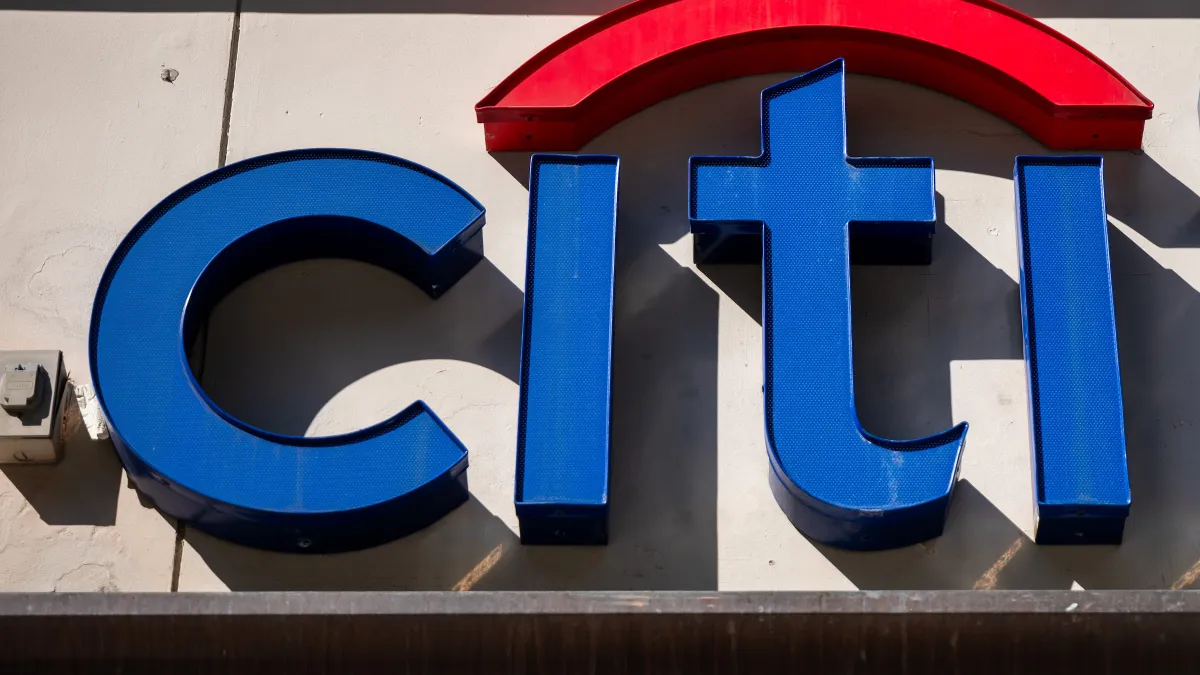If it’s Q4, that must mean Citi is warning that it will be hit with otherwise-unexpected charges. The bank will “incur significant wind down and related charges” to extricate itself from the South Korea retail market, it said Monday in a Securities and Exchange Commission (SEC) filing.
Citi couldn’t provide an estimate for the charges — mostly meant to cover voluntary termination benefits for employees — but said the cost is expected to gnaw away at profits through the end of 2023.
The Citi October surprise is becoming a pattern. This is roughly the season when rumors began to swirl last year of a potential regulator reprimand over deficiencies in Citi’s risk management that made it possible for the bank to make an errant $900 million transfer of funds to creditors on a 2016 Revlon loan. Weeks later, the Office of the Comptroller of the Currency (OCC) handed down a $400 million penalty, and the Federal Reserve filed a cease-and-desist order that, taken together, hastened the retirement of Citi’s then-CEO.
Citi said in April it would exit retail banking in 13 Eastern Hemisphere countries, opting instead to focus on four markets with high returns: London, Singapore, Hong Kong and the United Arab Emirates. The bank found a buyer for its Australia operations in August, and told Bloomberg on Monday it has seen “strong interest from a broad range of bidders” on 11 others — South Korea being the exception. But the market also represents $2 billion of the roughly $7 billion in tangible common equity the bank expects to release as a result of its 13-nation exit strategy.
It would be overstatement to say the South Korea charges represent history repeating itself. This merely should be taken as a note that Citi now tends to deliver its disappointing news in the fall. However, if news is cyclical and Citi’s Korea exit steers the conversation back toward the bank’s shortcomings, it would hardly be the only time over the past week when news has felt like “Round 2” of an ongoing narrative.
Bank data reporting
While a year may have passed between Rounds 1 and 2 for Citi, lawmakers clashing over the proposal to force banks to report to the IRS aggregate inflows and outflows on accounts holding more than $10,000 have played out all of Round 2 in about a week.
By the time the White House rolled out its Build Back Better Framework on Thursday, there was no hint of the proposal — just the commitment to hire IRS enforcement agents “who are trained to pursue wealthy evaders,” modernize outdated technology at the tax-collection agency, and focus additional resources on pursuing suspected scofflaws who make more than $400,000 a year.
The final straw may have come Tuesday, when Sen. Joe Manchin, D-WV, told Bloomberg and other outlets “no one should be in anyone’s bank account.” In a Senate divided 50-50 among Democrats who were largely for the proposal and Republicans largely opposing, any defection is critical.
A week earlier, Democrats had hoped for a reset. Round 1 had a slow build. The proposal, first pitched in April and meant to narrow the tax gap by collecting hundreds of billions of dollars in taxes left unpaid by the wealthy, became a victim of a messaging war.
And the blowback was so fierce a Treasury Department official posted a blog last month to clarify that the measure wouldn’t require financial institutions to report individual transactions — rather, how much money flowed into or out of an account over a given year.
Banks already submit tax forms to the IRS that focus on the interest customer accounts accrue.
“The idea that adding two boxes to a form they already send to the IRS is just going to be bedlam just does not hold up,” Sen. Ron Wyden, D-OR, one of the proposal’s major proponents, told The Wall Street Journal last week.
However, Republican opponents such as Senate Minority Leader Mitch McConnell, R-KY, in a Lexington Herald-Leader op-ed, latched on to the idea that the proposal would “let the IRS leaf through Americans’ checking accounts as if everyone were a potential criminal or terrorist until proven otherwise.”
And a handful of individual banks and trade groups encouraged their customers to voice their opposition to the measure by contacting House and Senate lawmakers.
A major sticking point was the initial $600 threshold attached to the proposal — an inflow that exceeds the outflow by more than that amount could trigger action.
Round 2 essentially began when Democrats re-pitched the proposal with a higher threshold — $10,000. “If you don’t have $10,000 above your paycheck, Social Security income or the like coming in or going out, there’s no additional reporting,” Wyden said last week in announcing the revised proposal, according to Bloomberg.
But that generated a new cycle of criticism from opponents. Richard Hunt, CEO of the Consumer Bankers Association, said the IRS could use the new data on accounts to request information on specific withdrawals and deposits.
“[The IRS] can’t deduce who is avoiding paying their taxes without peering through every financial transaction,” he told The Wall Street Journal. “Bankers cannot become agents of the IRS.”
Sen. Elizabeth Warren, D-MA, countered that notion in comments to The New York Times.
“Banks and their wealthy clients are outright lying, saying they would see individual transactions, and Republicans are backing them up,” she said.
Sen. Mike Crapo, R-ID, said he could support the proposal if the threshold were in the millions so small businesses wouldn’t be affected. As it stands, the plan the White House announced Thursday included a notion he floated to the press last week — that lawmakers should give the IRS more funding to improve computer systems and taxpayer services.
Still other Republicans made clear that no threshold was enough to get their support. “It does not matter if the amount is $1, $600 or $10,000. Americans don’t want the IRS snooping into their bank accounts,” Rep. Drew Ferguson, R-GA, told Fox News last week.
Ultimately, the proposal remained a casualty of messaging. “The motives are good [but] I don’t think the administration has done a good job of explaining exactly how this would work,” Janet Holtzblatt, a former Treasury Department and Congressional Budget Office official, told The Wall Street Journal.




















